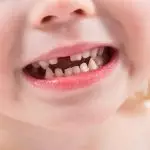
Connective Tissue Disorder in Children(Autoimmune/ Rheumatic Diseases) by Dr. Sagar Bhattad
10 min readWritten by Sindhuja Prabhu


Have you ever wondered how your joints work? How are some people able to move their joints and stretch in so many ways and some are just stiff? Have you noticed how flexible kids are and how that flexibility decreases as one ages? The entire body’s structure is held together by a group of tissues called connective tissues. These connective tissues are made up of two proteins called collagen and elastin. The connective tissue runs through the entire body and differs in cellularity and density.
The bones, ligaments, tendons, cartilage, and adipose are all part of the connective tissues. These help us function in our day-to-day lives. An issue with this connective tissue can affect any of these above-mentioned parts. While age does affect them, some people experience issues from a very early age too. Inflammation in these tissues can affect the proteins and other areas of the body. This is called connective tissue disorder.
In This Article
- Various Connective Tissue Disorder Diseases
- Causes of Connective Tissue Disorder in Children
- Identifying Connective Tissue Disorder in Children
- Treating Connective Tissue Disorder in Children
- Specific Disorders of the Connective Tissue(Autoimmune) in Kids
- FAQ’s
Various Connective Tissue Disorder Diseases
The disorders can be of different types depending on the underlying cause and the organs affected. Let us take a look at some of the most common types:
- Rheumatoid Arthritis
- Scleroderma
- Granulomatosis with Polyangiitis(GPA)
- Churg Strauss Syndrome
- Systematic Lupus Erythematosus (SLE)
- Microscopic Polyangiitis (MPA)
- Polymyositis/ Dermatomyositis
- Mixed Connective Tissue Disease(MCTD)
Causes of Connective Tissue Disorder in Children
The exact cause for these diseases is difficult to pinpoint. Sometimes it can be a genetic issue while other times it could be injury-induced. Some just appear without any apparent reason. Most of them are believed to be autoimmune in nature, wherein the body’s immune system attacks its own cells! Certain illnesses or conditions might be more common in certain age groups.
Some of the connective tissue disorder in children are genetic and are known as heritable disorders.
When it is not genetic, it is called non-inherited and possible reasons causing these diseases could be:
- Exposure to toxins in the environment
- UV exposure
- Infections
- Lack of adequate nutrition
Identifying Connective Tissue Disorder in Children
How can you identify these connective tissue disorders? It is easy to mistake them for regular injury. Especially if a child complains of aches in their joints, it is very natural to assume they hurt themselves while playing and it is nothing serious. Most parents just ask the child to sleep well and assure them they will be all OK in the morning.
Different connective tissue disorders can affect different parts of the body. Commonly affected parts are:
- Joints
- Bones
- Skin
- Blood vessels and even the heart
- Lungs (some can cause severe lung issues that can cause respiratory issues or even a total respiratory failure)
- Head and Face
Some of the symptoms affecting the above-mentioned body parts can be very misleading and confusing. It requires multiple tests by a professional to diagnose it as a connective tissue disorder.
Some symptoms can be very severe and affect the way the body functions and eventually affect the person’s quality of life. Some can be controlled well with timely medication and treatment.
A doctor can diagnose this disorder only after a battery of tests, physical exams, and sometimes with established criteria (certain symptoms indicate certain disorders). Some of these connective tissue disorders have a “classic” presentation in physical tests and “classic” abnormalities in blood tests. These are the established criteria that help a doctor diagnose it as a connective tissue disorder.
[Read : 10 Most Important Nutrients Needed For Strong Immune System in Kids]
Treating Connective Tissue Disorder in Children

Different connective tissue disorders affect different parts of the body in different ways. The treatment also differs accordingly. Two people with the same disorder can receive two different types of treatment if the impact is different on each of them.
Generally, the doctor will prescribe:
- Multivitamins
- Area-specific therapy (depending on which part of the body is affected)
- Medications (this can again vary from person to person)
The doctor will do regular checkups to see the progress of the treatments and the disease itself. Based on this they might refer you to specialists who deal with certain body parts (bones, skin, lungs, etc.).
If the inflammations are bad, the doctor might prescribe corticosteroids to reduce them for a short period. Once the inflammation is under control or reduced effectively, other treatments can be given. This will also have a better effect.
For example, if the inflammation in the knee joints is bad and causes difficulty walking, the doctor will first prescribe medicines to bring down the inflammation. Only then will they suggest physical therapy, because an inflamed joint makes physical therapy difficult and can cause further damage.
Once the doctor is certain about the type of disorder, they will prescribe medicines and treatments specific to that disorder. Certain medications can lead to other issues and the doctor will give preventive medications accordingly.
If the corticosteroid increases the chances of fracture, the doctor will prescribe preventive medications that are used for the treatment of osteoporosis. Some drugs act by suppressing the immune response, reducing inflammation, etc.
In these cases, the patient is at a higher risk of getting infections as the immune response is slowed deliberately. Here, the doctor will give medications to prevent commonly occurring infections or to improve the immunity against those infections.
If the diseases overlap (it starts with one and progresses into another due to the immune system or medications), the doctor will treat the disease as it progresses. So, it is difficult to be specific about the type of treatment a doctor will give for the autoimmune disorder of the connective tissues.
Specific Disorders of the Connective Tissue (Autoimmune) in Kids
Autoimmune disease is where the body’s immune system attacks the body’s own cells instead of the foreign invaders or infections. In such cases, the immune system’s response combined with various inflammations can affect the connective tissues surrounding the particular organ or anywhere in the body.
This can extend to the kidneys, pericardium, the lungs, or even the brain. The symptoms and the severity of the damage depend on the organ it affects.
The autoimmune disorder of the connective tissues is also known as an autoimmune rheumatic disorder or autoimmune collagen vascular disorder. Some of such specific disorders of the connective tissues are:
1. Juvenile Idiopathic Arthritis

Also known as juvenile rheumatoid arthritis, is a common type of arthritis affecting children below the age of 16. It can cause consistent pain in the joints, swelling, or even stiffness which can affect the child’s movement or their daily activities.
Some children can experience symptoms for years and some for just months before the disease is identified and treated. Similarly, some children might suffer serious complications that can even affect their growth.
After diagnosis, the doctor will first treat the inflammation and bring it down. This will not only reduce the pain for the child but will also prevent the damage from spreading to other joints, organs, or connective tissues. Once the inflammation is under control, the doctor will prescribe treatments and therapies targeting the affected areas.
Symptoms of Juvenile Idiopathic Arthritis
- Pain in the Joints: It happens especially after waking up in the morning.
- Swelling in Joints: Mainly in the bigger joints.
- Stiffness: It happens more in the morning after waking up.
- Swollen Lymph Nodes, Rash, and Fever: This may occur around the trunk area, especially in the evening time.
Juvenile idiopathic arthritis has many subtypes and it can affect just one or multiple joints. The most common types of this autoimmune disease are:
- Systemic
- Oligoarticular
- Polyarticular
If the pain or swelling in the joints does not come down for more than a week, it is time to check with a doctor.
[Read : Juvenile Idiopathic Arthritis in Children]
2. Systemic Lupus Erythematosus

SLE is the most common type of lupus. It is an autoimmune disease that can affect the skin, joints, blood vessels, kidneys, brain, and lungs. There is no permanent cure for this disease. Changes in lifestyle and medicines can help keep this condition under control.
The exact cause of this disease is still unknown. It could be genetic, hormonal, environmental factors, or even due to some medications. It is more common among women than among men. Especially young women and women of certain ethnicities are prone to having this condition.
SLE impact can be serious or mild. It depends on the person and the treatment also differs accordingly.
Symptoms of Systemic Lupus Erythematosus
- Fatigue
- Pain
- Swelling in the joints
- Rash – a butterfly-like rash appears on the nose and cheeks
- Fever
- Sensitivity to sun
- Lung problem
- Oral ulcers
- Arthritis
- Heart issues
- Kidney issues
- Psychosis
- Seizures
- Blood cell and immunological abnormalities
Diagnosing and Treating Systemic Lupus Erythematosus
For a doctor to diagnose Lupus, the patient must have at least 4 symptoms. Most people will test positive for ANA (Antinuclear Antibody), so that alone will not suffice. The doctor will do both a physical, as well as a nervous system examination.
This disease cannot be completely cured or successfully treated. Treatments and medications only aim to control it. The medications will depend on which part of the body the flares are in and how regular they are.
The disease seems to be more active among women below the age of 40 and during the initial years after. Sometimes the affected person may need medicine for a very long time, especially hydroxychloroquine.
This need not pass down to the next generation. Many women affected by SLE have healthy kids with no symptoms of SLE. However, certain SLE antibodies can cause a miscarriage.
3. Juvenile Dermatomyositis

Juvenile Dermatomyositis (JDM) is a rare autoimmune disease, which can at times be life-threatening too. It mainly affects the skin and proximal muscles. If JDM affects the skin, it can sometimes be serious and quite a challenge to treat effectively. When not treated properly, it can lead to calcification underneath the skin layer, thus affecting the quality of life.
JDM affects children between the ages of 7 and 16. It seems to be more prevalent among girls than among boys. In very rare cases it can even start before the child turns 2 years old. It can also last well into adulthood.
The exact reason behind JDM is still unknown, though genetics and infections are the main suspects. Though genetic, it is not a contagious disease.
Symptoms of Juvenile Dermatomyositis
- Rash
- Fever between 101 – 104 degrees
- Fatigue (more than kids the same age)
- Stiff and sore joints
- Loss of appetite
- Ulcers
- Choking
- Muscle aches even while doing regular activities
- Loss of weight
- Tender muscles
Diagnosing and Treating Juvenile Dermatomyositis
There is no permanent cure for JDM. After diagnosis, the doctor will give medications to control the inflammations and therapy to improve muscle strength. The treatment can vary according to the symptoms, severity, and affected body part.
JDM can go into remission after 2 years. However, it can last for more than 2 years in some children and the symptoms can be more severe too. This need not stop the child from leading an active and normal life, with a few changes and adjustments.
4. Vasculitis

Vasculitis is a group of rare diseases that cause inflammation in the blood vessels including the arteries and veins. Different diseases under vasculitis will present different symptoms. Some can be mild while some can be severe (even life-threatening). An early diagnosis of this disease can help in preventing severe damages.
Since it is an autoimmune disease where the immune system attacks the body’s own cells, the doctor might prescribe medicines to suppress the immune system. This can increase the risk of other infections. Vasculitis can affect both men and women of all age groups.
Symptoms of Vasculitis
- Shortness of breath
- Hand or foot may feel weak or numb
- Red spots on skin, nodules, or ulcers
Common Types of Vasculitis
Some of the common types of Vasculitis are as follow:
a) Henoch Shonlein Purpura
Also known as IgA vasculitis, is a disorder that affects small blood vessels. Henoch Shonlein Purpura causes inflammation of the blood vessels in the kidney, intestines as well as the skin and joints. It can cause bleeding too. The telltale sign of this variant of vasculitis is a purplish rash on the buttocks or the lower legs.
b) Kawasaki Disease
Also known as KD, is a disease that affects children below the age of 5. KD causes inflammation of the blood vessels all over the body. If not diagnosed and treated in time, it can cause some serious damage to the heart.
c) Others
There are many other types of vasculitis grouped based on the size of the arteries it affects.
[Read : Kawasaki Disease in Children]
5. Scleroderma/ Morphea

This is a disease that causes discoloured patches on the skin with no pain. It is very rare and can improve on its own over time. Medications and therapies can help keep this disease under control. However, it can recur at any time.
Symptoms of Scleroderma/ Morphea
- Purple or reddish oval patches on the skin (belly, chest, or the back)
- Linear patches on arms, legs, forehead, or scalp
- Patches progress to develop white centers
- The affected skin gradually thickens and becomes firm, dry, and shiny
The cause of this autoimmune disease is still unknown. However, an early diagnosis can help in slowing down the disease and delay the formation of new patches. In some cases, severe complications can cause damage to the eyes (when head and neck are affected), affect movements (when limbs are affected), or hair loss (when head and scalp are affected).
In some serious cases, the thickened skin patches can join as they spread. This is called generalized Morphea. Morphea is not contagious.
Most disorders of the connective tissues are autoimmune diseases, the diagnosis and treatments of which can be difficult. Doctors change treatments and medications as the disease progresses. This can affect the affected person’s quality of life. It can affect the people caring for them too.
If your child has been diagnosed with one of these specific disorders, you need to be patient and understanding with the child and cooperate with the doctor as well. It can be a tough journey, but with enough help and support, you can help your child lead a life as close to normal as possible.
FAQ’s
1. What is the Most Common Connective Tissue Disorder?
The most common connective tissue disorder is Rheumatoid Arthritis (RA). No clear cause has been identified. However, we know that this is an autoimmune disease and must be treated by rheumatologists. The immune system attacks the body’s own cells and causes inflammation around the joints, and membrane. It can even affect the lungs, heart, and eyes. This disorder seems to affect more women than men.
There is no permanent cure for this disorder. It is controlled with the help of therapies and medications. This is usually found in people between the age group of 20 – 50. When this affects young children, it is called juvenile idiopathic arthritis.
2. Is Connective Tissue Disorder Genetic?
Some types of connective tissue disorders are genetic (heritable) but not all. Some can be due to environmental factors like continued exposure to toxins, injury, etc. It can even be due to some other autoimmune disease, which over time has affected the connective tissues surrounding the organ or anywhere in the body.
Non-inherited disorders can be both difficult to identify and diagnose. Since they can be caused due to environmental exposures, it is difficult to identify which parts are affected or can be affected.
Read Also: Autoimmune Vs. Low Immunity – What’s The Difference?

Sindhuja Prabhu,M.Sc (Psychology),PGDBM
Sindhuja, a mother of two, is an obsessive mom with a keen interest in psychology, especially child psychology. Her quest for knowledge and way with words led her to become a passionate content writer. She transformed her love for writing into a full-fledged career which incidentally also turned up being the perfect stress buster for the last 5 years.Read more.
Responses (0)
Want curated content sharply tailored for your exact stage of parenting?
Related articles

10 Fun Indoor and Outdoor Relay Race Ideas For Kids

Safety For Children While Using Cars With Sunroofs by Dr. Chetan Ginigeri

Tooth Decay in Kids – Causes, Risks, And Prevention

Early Loss of Baby Teeth – What to do?

Top 100 Friendship and Learning Quotes For Preschoolers

Fragile X Syndrome in Children
Sponsored content
Discover great local businesses around you for your kids.
Get regular updates, great recommendations and other right stuff at the right time.





